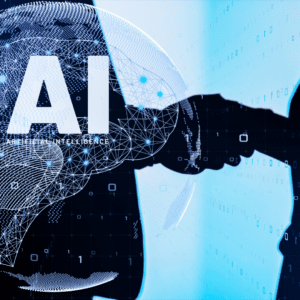In the rapidly evolving field of artificial intelligence, building trust in AI systems has become a cornerstone of ethical development. Without trust, organizations risk deploying solutions that may lead to unintended consequences or undermine confidence in your organization’s effectiveness. This article explores an AI assessment Framework for developing trustworthy and ethical AI applications. It equips professionals with the tools to navigate challenges such as problem complexity, outcome consequences, and data reliability.
Trustworthy AI assessment requires evaluating three core dimensions including understanding the complexity of the problem AI is addressing, assessing the magnitude of potential consequences, and ensuring the sufficiency and reliability of the data supporting the system. These considerations are essential for ethical AI innovation and responsible decision-making.
- Why Trustworthiness is Critical for AI Success
- The Pillars of a Trustworthy AI Assessment Framework
- Applying AI Assessment in Real-World Scenarios
- AI Assessment: Navigating Complexity and Consequences
- Building a Culture of Multi-Disciplinary AI Development
- Achieving AI Excellence with an AI Assessment Framework
Key Takeaways:
- Trustworthy AI assessment evaluates problem complexity, outcome consequences, and data reliability to ensure ethical AI development.
- Effective decision-making in systems requires aligning AI solutions with human judgment, especially when navigating high-stakes challenges.
- Practical application of the framework includes cybersecurity, healthcare, and public policy use cases, demonstrating its versatility across industries.
- Building a culture of responsible AI development fosters accountability, transparency, and cross-disciplinary collaboration.
To learn more about implementing these principles effectively, let’s dive deeper into the framework and its practical applications.
Why Trustworthiness is Critical for AI Success
Trust in AI systems is no longer optional—it’s imperative. In sectors like cybersecurity, healthcare, and finance, untrustworthy AI can lead to costly errors, ethical dilemmas, and even death. For instance, AI-powered fraud detection systems on finance that rely on poor data can wrongly flag legitimate transactions or allow fraudulent transactions. These mistakes damage consumer trust, brand reputation, and impact profit..
Building trust begins with ensuring that AI systems are transparent and accountable. This involves aligning AI’s functionality with organizational goals, regulatory standards, and societal values. By prioritizing trustworthiness, organizations not only mitigate risks but also foster confidence among stakeholders, paving the way for long-term success.
The Pillars of a Trustworthy AI Assessment Framework
Trustworthy AI assessment framework ensures AI systems are evaluated with a structured, ethical approach. This framework focuses on three key pillars:
- Problem Complexity – AI challenges range from simple automation to wicked problems with no clear solution. The more complex the problem, the greater the need for human judgment in AI supported decision-making. Public-sector agencies handling national security, for example, rely on AI for data analysis but require human oversight to address nuanced risks.
- Outcome Consequences – AI systems vary in impact. While targeted advertising has minimal consequences, AI used in defense or healthcare carries significant risks. Decision-makers must assess these outcomes carefully and implement safeguards, especially in high-stakes applications.
- Data Reliability – Reliable data analytics is essential for optimizing AI outcomes. While biased data is a known issue, NIST research highlights that AI bias also stems from human and systemic factors embedded in AI models. Sparse or noisy datasets lead to flawed predictions, whereas high-quality data improves accuracy and fairness. Organizations should invest in robust data collection and cleaning to enhance AI performance.
By addressing these three pillars, businesses can develop AI systems that are both effective and ethically sound while ensuring trust, accountability, and reliability.
Applying AI Assessment in Real-World Scenarios
Implementing the AI assessment framework for ethical development in real-world applications requires practical strategies tailored to industry needs. While AI adoption is growing, only 25% of U.S. businesses had integrated AI as of 2022, with larger firms leading the charge, according to the Bipartisan Policy Center. This disparity underscores the importance of ensuring AI is deployed responsibly, particularly in industries where ethical and regulatory concerns are paramount. Let’s consider a few examples:
- Cybersecurity: AI can analyze anomalies in network activity to identify potential breaches. By evaluating data reliability and balancing the consequences of false positives or missed threats, organizations can fine-tune AI to enhance security without overburdening IT teams.
- Healthcare: AI-powered diagnostic tools must account for problem complexity, especially when diagnosing rare diseases. Transparent algorithms and reliable datasets ensure that physicians can confidently use AI insights to improve patient outcomes.
- Public Policy: Government agencies use AI to predict the impact of legislation. These systems must be transparent and auditable, with clear guidelines to evaluate the ethical implications of policy recommendations.
These scenarios highlight how the framework can guide AI adoption while addressing industry-specific challenges.
AI Assessment: Navigating Complexity and Consequences
Balancing problem complexity and outcome consequences requires critical thinking to ensure AI is effectively and ethically applied in complex situations. Complex problems often involve multiple stakeholders, each with multiple competing priorities. This makes it vital to design AI systems that can adapt to varying perspectives while maintaining fairness and accountability.
Consider the example of disaster response planning. AI can model potential scenarios and recommend optimal resource allocation. However, the consequences of inaccurate predictions—delays in aid or resource shortages—can be severe. By applying trustworthy AI assessment before the crisis occurs, organizations can ensure that these systems include safeguards, redundancies, and human oversight.
This approach reduces the likelihood of harm and ensures that AI serves as a reliable tool for decision-making in high-pressure situations.
Building a Culture of Multi-Disciplinary AI Development
Trustworthy AI assessment goes beyond technical evaluations; it’s also about fostering a culture of responsible multi-disciplinary development within organizations. Leaders play a critical role in setting the tone, emphasizing transparency and collaboration across teams. Here are a few ways organizations can build this culture:
- Cross-Disciplinary Collaboration: Encourage input from data scientists, ethicists, and domain experts to ensure well-rounded decision-making.
- Continuous Education: Invest in training programs to help teams understand the state of the art and practice in AI and how to most effectively leverage it..
- Accountability Mechanisms: Implement policies that require teams to document AI design decisions, making systems more transparent and auditable.
Public skepticism toward AI remains a significant challenge, with 37% of Americans expressing more concern than excitement about artificial intelligence, according to Pew Research. This highlights the need for organizations to proactively embed trustworthiness assessment into every stage of AI development, ensuring ethical oversight, transparency, and responsible innovation. Doing so not only strengthens ethical standards but also enhances the credibility of AI solutions in the marketplace.
Achieving AI Excellence with an AI Assessment Framework
As artificial intelligence continues to shape critical decisions across industries, the importance of an AI Assessment Framework for deploying trustworthy AI systems cannot be overstated. By thoroughly analyzing problem complexity, weighing the magnitude of potential consequences, and ensuring data reliability, organizations can make informed, ethical decisions that inspire trust and drive innovation. Trustworthy AI is not just about technology—it’s about aligning systems with human values, fostering accountability, and creating solutions that stand up to scrutiny in high-stakes environments.
Energize your data with insights rooted in ethical AI development. Discover how KaDSci applies expertise in data analytics, mathematical modeling, and actionable assessment frameworks to help navigate AI challenges and strengthen mission outcomes. Reach out today to explore how we can help you achieve trustworthy and transformative results.
What are the biggest challenges in achieving trustworthy AI in high-stakes industries?
High-stakes industries, such as healthcare and defense, face challenges like integrating AI into complex decision-making processes, addressing data quality issues,, and ensuring transparency. These challenges require a balance between machine-driven insights and human oversight to build systems that are cost effective, ethical, reliable, and aligned with organizational goals.
How can organizations validate the ethical impact of their AI systems?
Organizations can validate the ethical impact of AI by conducting regular audits, leveraging frameworks like the trustworthy AI assessment framework for ethical development, and involving cross-disciplinary teams to evaluate potential risks and unintended consequences. Transparency and stakeholder engagement are key components of this validation process.
Why is aligning AI with human values critical for trustworthiness?
AI systems that align with human values are more likely to gain user trust and produce ethical outcomes. This alignment ensures that AI decisions reflect fairness, accountability, and inclusivity, especially when addressing sensitive or high-impact problems. Without this alignment, organizations risk deploying systems that may lead to bias or harm.










